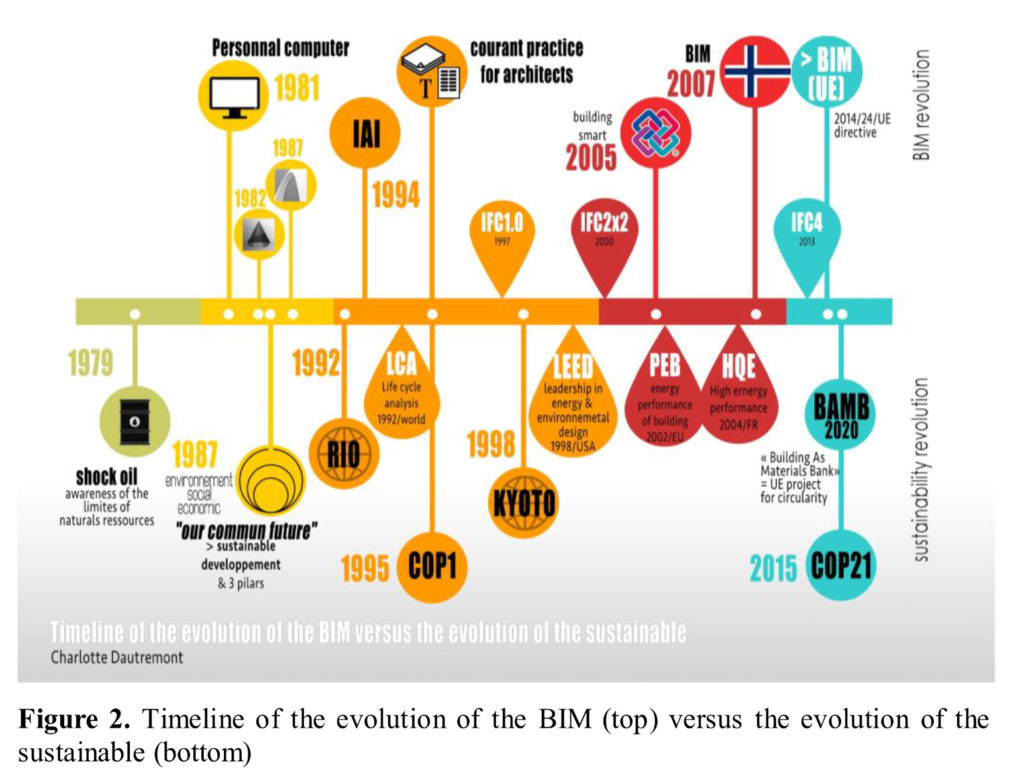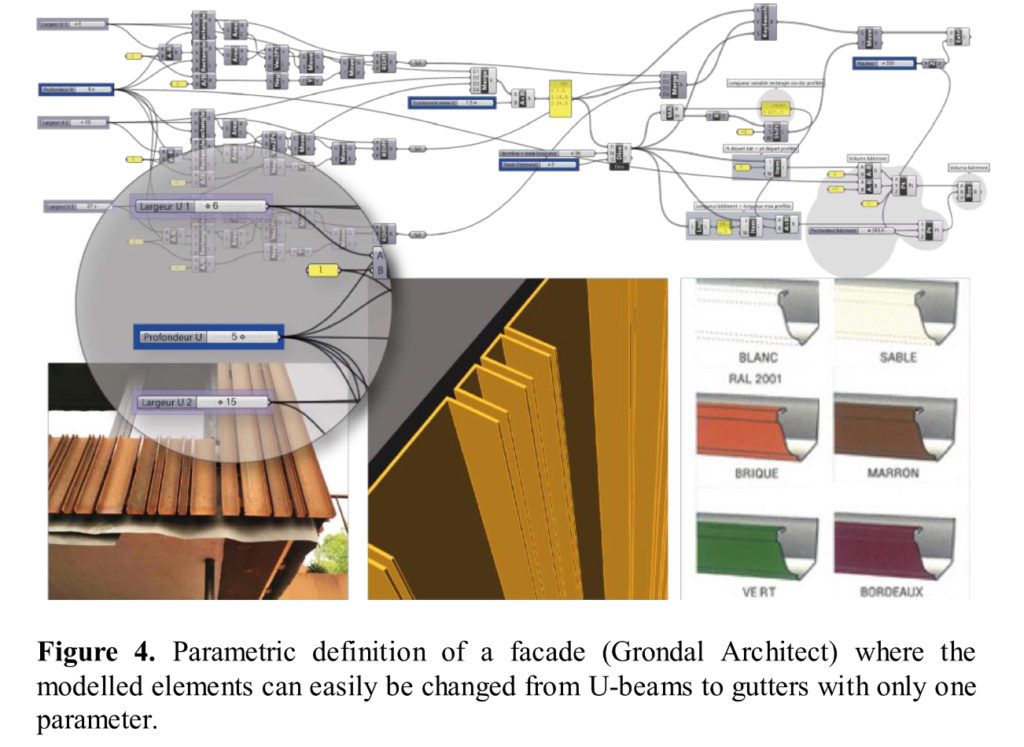Keywords: BIM, Reuse, Modeling, Circularity
C Dautremont1, S Jancart1, C Dagnelie2 and A Stals1
1LNA, Faculty of architecture, Liège University, Belgium
2ERCUS Architecture, Belgium
Abstract.
The current change in societal model, from linear to circular, coupled with the digital transition, is changing certain architectural practices. The emergence of BIM (Building Information Model, Modeling, Management) generates an evolution of the work process and collaborative tools. However, the BIM tools hardly integrate digital information of the elements found during the material inventory. Moreover, these tools are not really adapted to the modeling of formally complex elements. The designers are thus led to appropriate new tools such as those of parametric design. Although for a long time reserved for “star-architects” projects, we will rely on a Belgian research showing that these tools are gradually appearing in architectural agencies. Our study has shown that the use of parametric design can be a lever of creativity in architectural practice as well as a springboard for the integration of reuse materials. We therefore ask several questions in this regard: What are the challenges of a circular architectural approach? How can digital tools be used in this process? Does parametric have a place in a reuse perspective? This contribution analyses how to include a form of circularity in architecture and mainly around the implementation of reuse elements. We propose a workflow between BIM and parametric tools as a means of valuing reuse in architecture. We will approach these questions with concrete examples illustrating the relevance of the link between parametric and reuse.


Presented at BAMB2020
Full article here